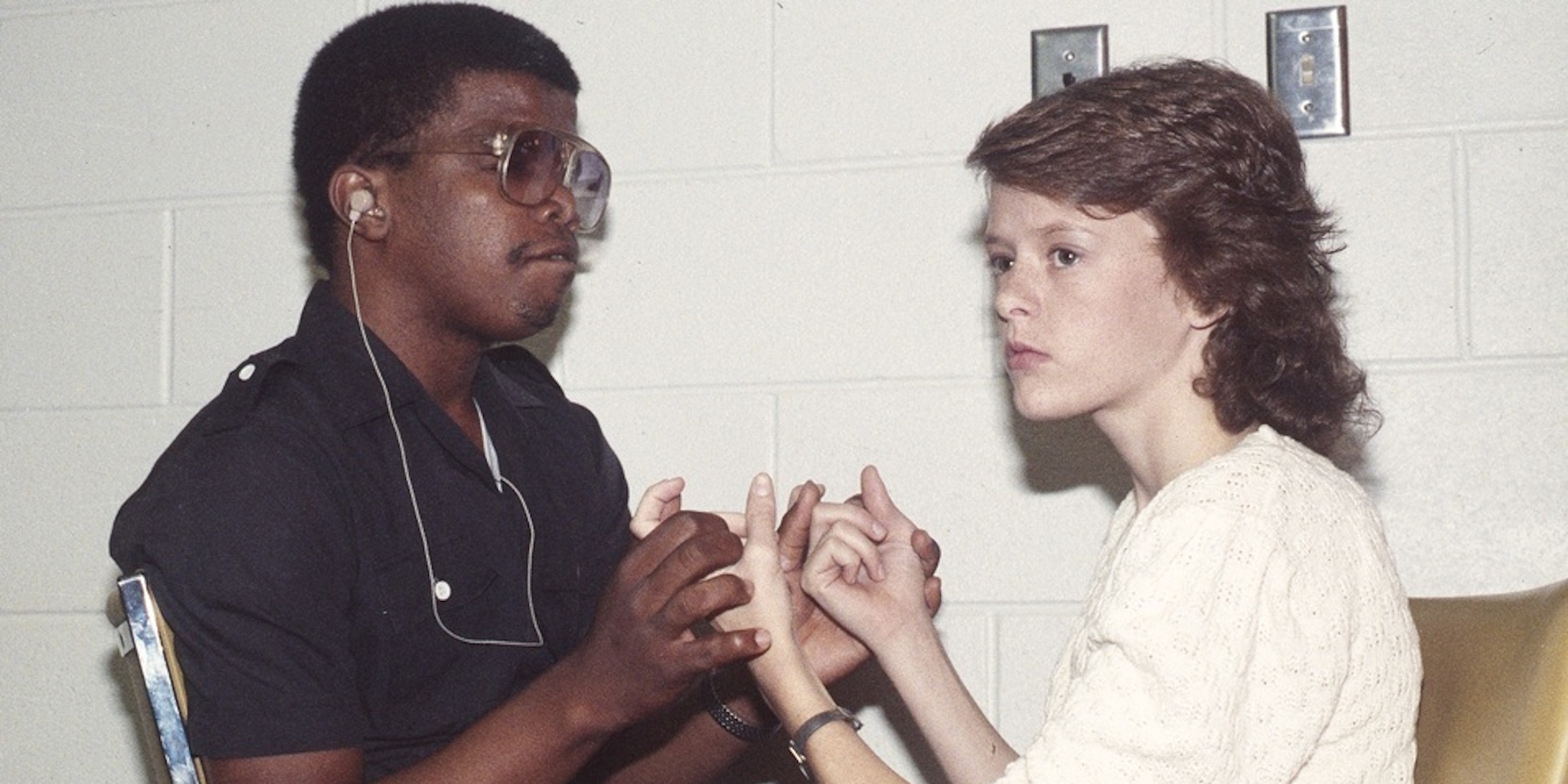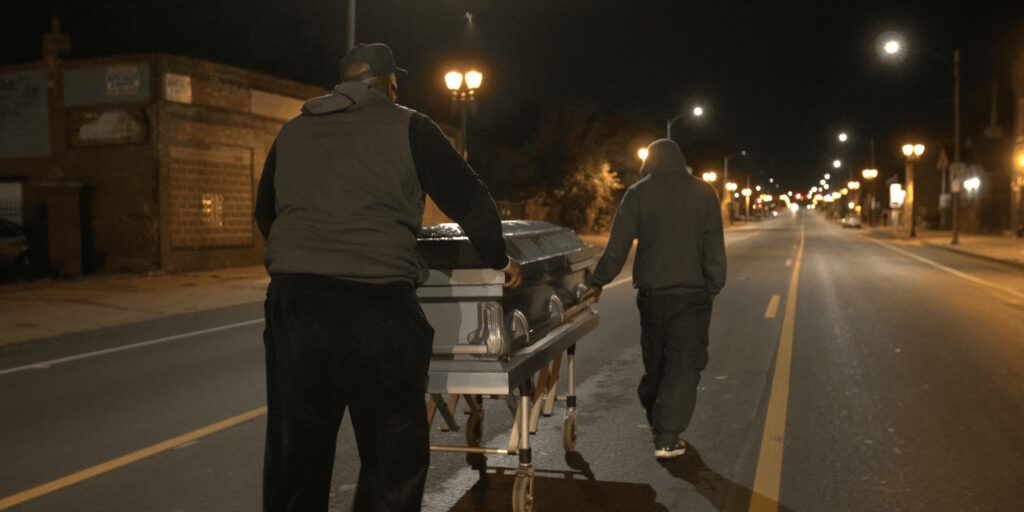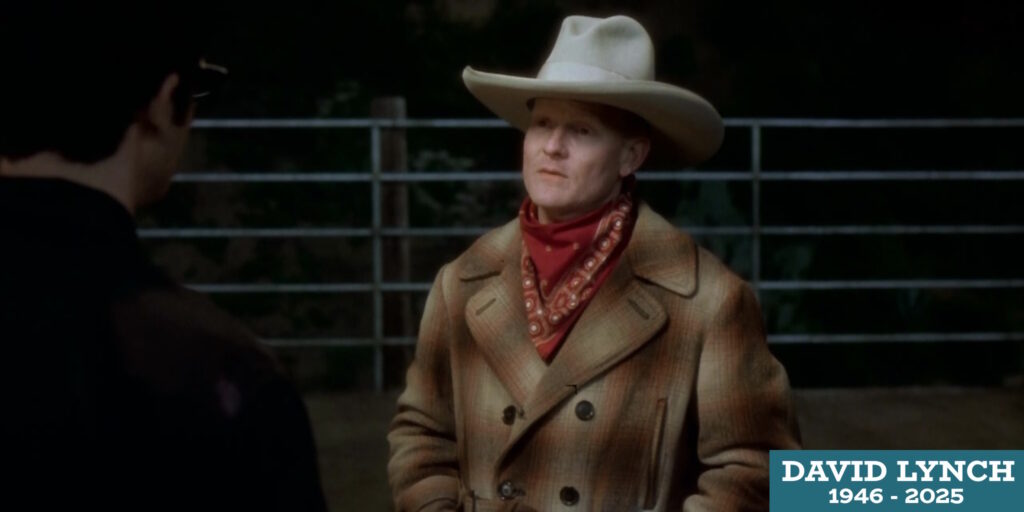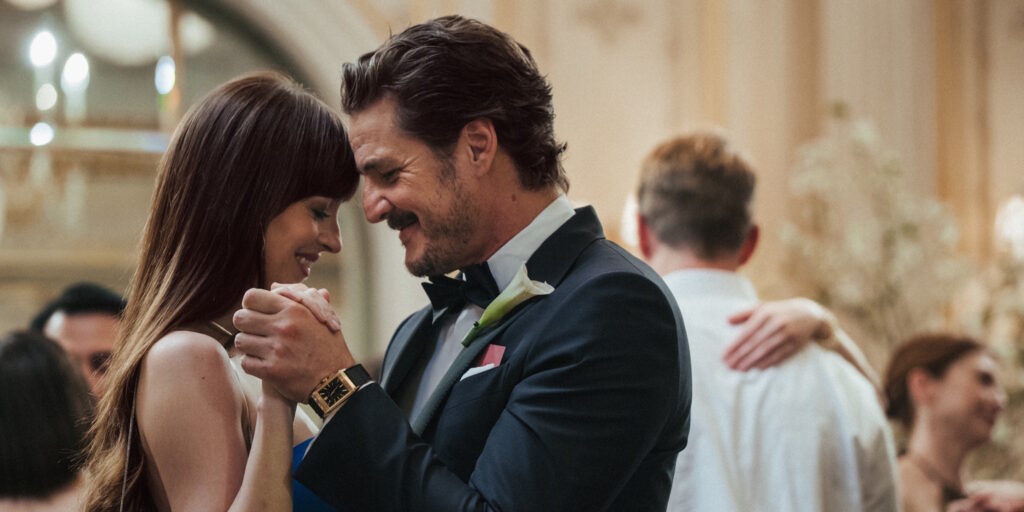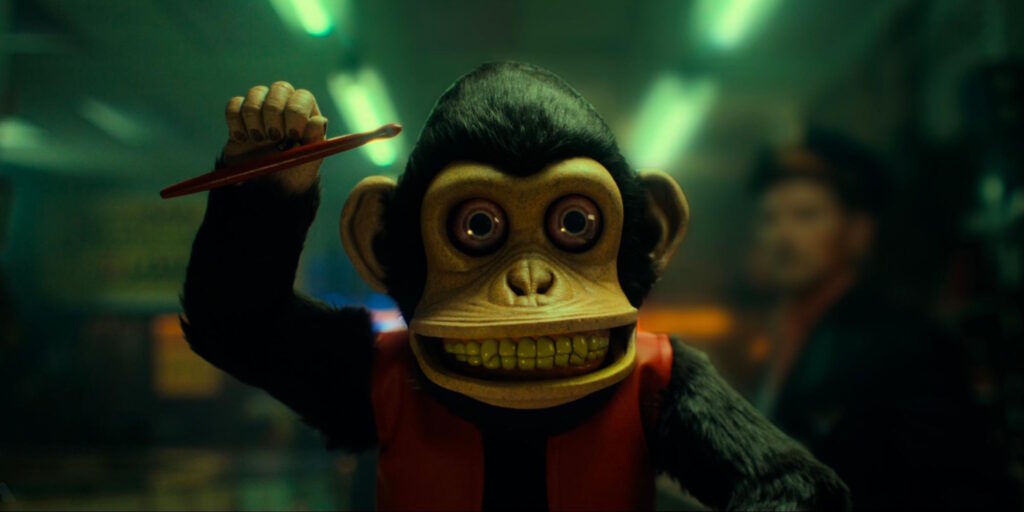From Feb. 6 – May 29, the Webster University Film Series will feature a marathon retrospective on the works of legendary American documentarian Frederick Wiseman. The Take-Up is co-sponsoring this series, which editors Kayla McCulloch and Joshua Ray also assisted in programming. This piece is one of several essays from Kayla looking back at some the individual films featured in the retrospective, situating them in the wider context of Wiseman’s staggering filmography and his vital influence on the documentary form.
Judging by the titles of Frederick Wiseman’s films alone, one might assume that the documentarian is only interested in covering crumbling institutions, failing organizations, and even death itself. Those only glancingly familiar with his work might hear one of the names of his projects and assume they’re in for a dour, dreary slog. Combine this with the running times of his features — which, as his career progressed, only ballooned — and something like State Legislature (2007, 217 minutes) or Near Death (1989, 358 minutes) might sound truly torturous. The irony, of course, is that the opposite is true. Wiseman’s titles are perfect distillations of his subjects, proof of his ethical commitment to fairness, and his runtimes are evidence of just how absorbing those subjects proved to be. After Wiseman shoots more than 100 hours per film, what the viewer is left with is only the most riveting, most life-affirming, most profound footage — total running time be damned. The best example of this across his more than 40 docs? The Blind & Deaf series: Four documentaries, all set within the Alabama Institute for the Deaf and Blind (AIDB), collectively serving as the longest and most comprehensive effort of his nearly 60-year-long career.
Blind (1986), Deaf (1986), Adjustment & Work (1986), and Multi-Handicapped (1986): This is the scope of the AIDB, the best education, rehabilitation, and service program on the planet for those who are deaf, blind, deafblind, or multidisabled. Wiseman — who, as a rule, typically enters into production with very little prep, saving things like dramatic structure and narrative arc for the editing room after the fact — initially envisioned just one film for the entire institute. It didn’t take long for him to realize that the Alabama School for the Deaf, the Alabama School for the Blind, the Helen Keller School of Alabama, and the E.H. Gentry Facility were all deserving of their own feature-length treatment and that anything less would be to trivialize the important work being done in Talladega. With this, the Blind & Deaf series came to be. Close to 40 years on, it remains one of the most hopeful, most compassionate, most considerate looks at disabled life in America that has ever been assembled.
Based on its opening shots, Blind feels like the start of a very different film: It’s race day at a motor speedway, and the crowd is primed and ready for some high-octane thrills. Cars line up, eager to deliver precisely that at the wave of a flag. It’s not until the camera lands on a school bus full of visually impaired students holding musical instruments that it becomes clear exactly why Wiseman sets this opening at the racetrack (and so soon after his doc of the same name from the year before). These are kids from the Alabama School for the Blind, and they’re here to kick off the day’s festivities, just like any run-of-the-mill high-school marching band would. This 10-minute prologue is classic Wiseman, through and through: an all-American setting, shown from the perspective of those our society all too often overlooks. It’s a setup so gripping, one is quite willing to follow the school bus to campus — and to stick around for the next two hours as some of the most prolonged, least edited sequences of the director’s career unfold.
Expanding his reach from one film to four allows Wiseman the freedom to operate in his most observational (and, by extension, most Wiseman-ian) zone. Two of Blind’s standout moments — a student ventures from one classroom to another and back again; another learns how to walk with a cane — collectively total about 20 minutes. The number of discernible cuts in that time can be counted on one hand. Though the director always aims to be fair in his assembly of his footage, it is rarely so raw and unedited. For a documentary filmmaker who has always preferred to show and not tell, radically forgoing industry-standard talking heads, on-screen text, and voiceover narration since Titicut Follies (1967), Blind is the ultimate proof of the power of his signature style. Just as the Alabama School for the Blind gives its students ample space to navigate their condition, Wiseman provides his footage the room it needs to breathe — and for the audience to take it all in.
Though the complete tetralogy totals nine hours in all, Deaf (1986) is the longest of the four parts. Set within the halls of the Alabama School for the Deaf, Wiseman spends much of the first hour presenting B-sides to scenes depicted in High School (1968), only on a much broader scale — viewers see the goings-on in classrooms from kindergarten to 12th grade, the only difference being the methods used: sign language, listening devices, a greater emphasis on visual aids, all in an effort to provide an education to those who wouldn’t otherwise benefit from traditional instruction. Because of the very nature of the medium, Wiseman couldn’t fully replicate the experience of being blind in the first chapter and still call it a film. At least, not in the same way he can with Deaf: Lessons and conversations take place through the use of sign, but Wiseman doesn’t give the audience any assistance — effectively relaying the alienating feeling of a limited vocabulary. It requires one to watch and listen a little closer, underlining the amount of work it takes to try and keep up in a world that wasn’t designed with accommodations in mind.
As with Blind, Deaf takes full advantage of its extended length in ways Wiseman has rarely done before. Around the one-hour mark, the camera lands in the principal’s office. Here, a mother and her son Peter, a deaf student, are meeting with an AIDB instructor and said principal. Over the next 50 minutes, Wiseman straps in and lets the meeting unfold more or less in real time. As we soon learn, the issue that has landed Peter in hot water is a multifaceted one. His father is absent, putting part of the blame on his son’s deafness. His mother hasn’t even tried to learn American Sign Language (ASL), giving the excuse that raising his other siblings as a single parent has kept her from being able to put in the work. Not surprisingly, Peter has behavioral problems, a natural response for any teenager shut out by the adults who are supposed to care for them. It’s remarkable in its realness, an instant highlight not only within the Blind & Deaf series but across the director’s entire oeuvre, and it’s something that could only exist in a Wiseman epic such as this.
Adjustment & Work, focused entirely on adults entering the working class, and Multi-Handicapped, centered on schooling at the Helen Keller School of Alabama, are, in effect, the B-sides to Blind and Deaf. Whereas the first two films in the four-part series can be described as some of Wiseman’s most optimistic, most heartwarming work, these subsequent counterparts feel much more in line with his heavier, more difficult docs. The latter chapters are no longer solely about the K-12 system and the creative — and, often, in the case of the AIDB, very successful — workarounds to meet the standardizing requirements that come with curriculum-based education.The back half of the Blind & Deaf series instead serves as stark evidence of the gaps that exist in the AIDB edifice and the attempts — successful and not — to close them before sending students off to fend for themselves.
As suggested by the title, Adjustment & Work is a documentary split down the middle: a sizable section devoted to helping adults prepare for the intricacies of independent living, another spent observing the labor force that awaits them at Alabama Industries for the Blind. Gone is the relative safety and security of the classroom environment of their adolescence. The goal here is far more sobering: to prime sensory-impaired individuals for the unforgiving grind of real life. Forget the Reagan-era notion that ignorantly claims a person can do anything they set their mind to. That fantasy is challenged directly by the events that Wiseman depicts in these 120 minutes, the final section in particular: After participants receive training in more than a dozen different fields of work — including food service, computer science, and other interesting paths — the camera watches as AIDB alumni crease folders, assemble cleaning supplies, and piece together military gear. They do this every day but Sunday, a tour guide tells a prospective group. If there’s one of Wiseman’s sly critiques to be found in the Blind & Deaf series (apart from the obvious disappointment in our civilization’s lack of resources and accommodations for those who need them), it’s in the inherent dehumanization that comes with joining the American workforce.
Multi-Handicapped returns to the K-12 side of AIDB’s premises to reveal another element of its scope: the students with more than one disability whose unique needs extend beyond the parameters of care of either the Alabama School for the Deaf or the Blind. This is the day-to-day at the Helen Keller School — educators as parents, caretakers, counselors, administrators, and whatever role the moment demands. There are levels to this sort of all-encompassing care, and some children will need more of it than others. Wiseman continues his series-long trend of longer shots and fewer cuts, capturing some hugely powerful but incredibly small moments that stick with the viewer not only after the credits roll but also in the wake of the Blind & Deaf series as a whole. (A salient example: Wiseman captures a conversation between a deaf student and his deafblind friend, signing using fingertips on palms.) For all the big victories celebrated in Deaf, Blind, and Adjustment & Work, it’s the bittersweet emotion of witnessing these tiny wins that makes Multi-Handicapped the ideal endpoint for the biggest undertaking in his filmography, before or since.
“We’re not sick, we’re just people,” one man tells a supervisor in Adjustment & Work. If one had to pick a line to double as a thesis statement for the Blind & Deaf series, it would be this. It’s a concept Wiseman’s explored dating back to Titicut Follies — and one that could apply to a dozen of his documentaries over the years — but the Blind & Deaf series embodies it like nothing else he’s ever done. It’s empathy beyond the sympathetic lens of Hospital (1970), Welfare (1975), and the like: With lengthier scenes, a tighter focus, and a fraction of the edits seen in his others docs, Wiseman instills the very mutual understanding sought by the high-schooler at the end of Blind. “When they hear the word ‘blind school,’ or ‘deaf school,’ or ‘Helen Keller,’ they think, ‘Oh my goodness … they don’t know how to do anything,’” she says of the public. What the Blind & Deaf series ultimately proves is that this misconception is not the fault of the people, but rather the unaccommodating society in which they exist. A common refrain for Wiseman, to be sure, but one that has never been communicated so emphatically as it is in this monumental quartet.
The Webster University Film Series’ Frederick Wiseman Retrospective runs from Feb. 6 – May 29. Each film screens for one night only.: Deaf at 7 p.m. on Apr. 12; Blind at 7 p.m. on Apr. 17; Adjustment & Work at 7 p.m. on April 24; and Multi-Handicapped at 7 p.m. on May 1.
